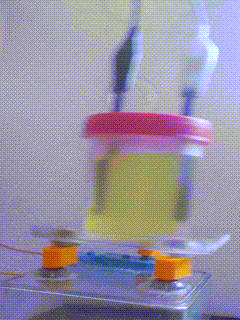Originally posted by 12AX7
I can't imagine it being very hard. Build a sturdy base: use lots of heavy steel, or cast iron if possible. At worst, a trip to the junkyard should
secure some choice, if rusty, beams for this. Bolts can hold it together just fine, but welding would be quite nice as well. While you're at the
'yard, pick up some medium sized springs to support the shaker table. Obtain a working electric motor, probably 1/8 HP or less, and gear it down.
You can find a gear head motor or adapt a reduction drive to it, or use pulleys. Pulleys are pretty easy to handle, easy to obtain from most any
hardware store. You need at least two pulleys, shaft stock, bearings (usually pillow bearings) and a belt of the correct length. The RPM ratio
equals the ratio of diameters. When you have the right ratio (by pulleys alone, you'll probably need two sets- 1725 RPM down to 60 in one step
(1/28th) is pretty far -- a 1/5 ratio followed by 1/6 would work quite nicely), mount a vertical shaft in the center and add a crank to it. Fix a
point on the shaker table to the crank, so it goes in circles. Optionally, you can also add a really heavy weight (as heavy as the table) opposite
the crank, to reduce vibration.
This can all be done with bolts, hardware store stock (if a bit expensive in total) and hand-drilled holes. A drill press helps making holes, and a
welder helps to stick metal together. A chop saw helps break down stock, but a hacksaw works with some elbow grease. A home foundry allows you to
cast all the heavy or expensive parts (base, pulleys, etc.) yourself.
The only block you have is not having any experience in metalworking. If you think about it, it's just geometry. Really easy stuff. You already
have an intuitive concept of structure, strength and stiffness, just build it as heavy as you think it needs to be.
Tim |


